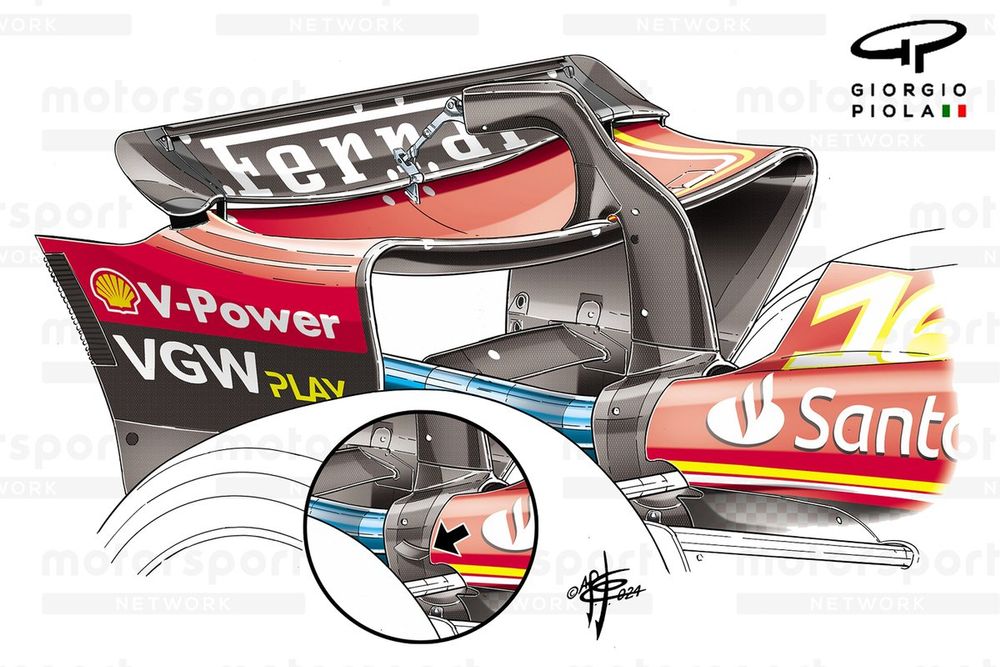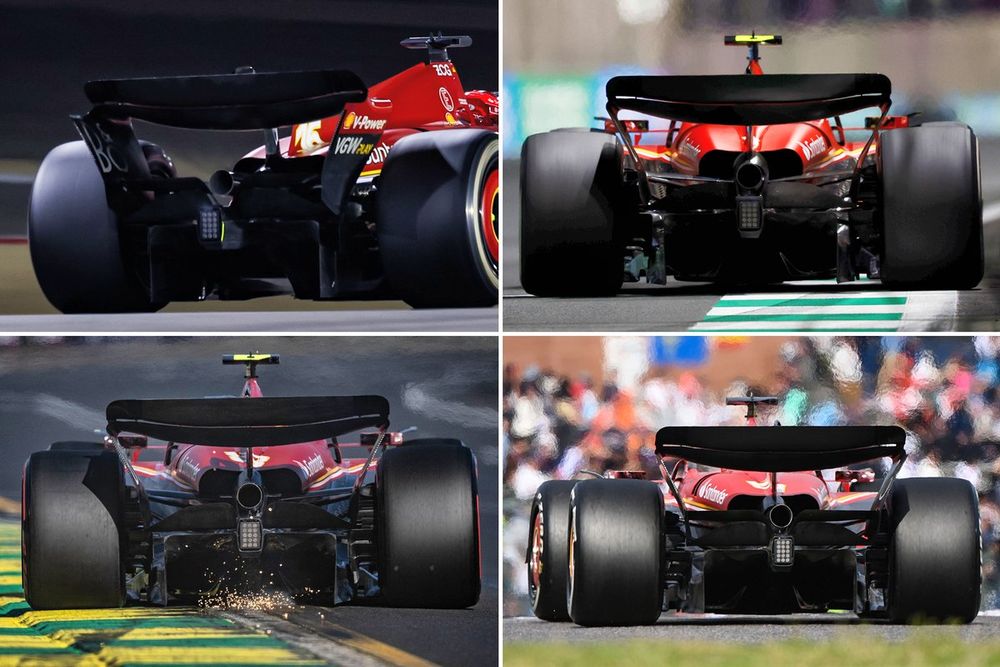What is perhaps most interesting about Ferrari’s performance, however, is that it has come without it bringing any significant upgrades to its car.
While work is under way on what is understood to be a pretty major development step for the start of the European season at the Emilia Romagna Grand Prix, changes have so far been only minor touches.
It was a small tweak to the rear suspension’s upper wishbone fairing that received some attention in Japan, as the team modified the chord length of the rear leg (highlighted in yellow, inset).
Ferrari, like several other teams, has opted for what appears, at least externally, to be a multi-link arrangement with its upper wishbone.
However, the assembly does converge where it meets the upright, which is out of sight behind the brake duct fence.
The design offers some flexibility from an aerodynamic perspective, while also allowing the brake duct outlet to be resized according to its requirements and permitting the cluster of winglets behind to work more effectively.


One fascinating aspect of Ferrari’s start to the campaign is that it has not changed its rear wing specification across the four events so far, even though the venues at play have all had different downforce/drag requirements.
The only rear wing changes we have seen, according to the FIA submission documents, are the Maranello squad bringing various old options in case they were needed for the Saudi Arabian and Japanese Grands Prix.
In both these instances, it was noted that these were carryover items from 2023, rather than fully developed solutions specific for 2024.
Both were more or less fallbacks that could be run should the conditions require — but ultimately were not needed.
Instead, Ferrari was able to adapt its car to the requirements of each race weekend through trimming its beam wing arrangement.
For the high downforce tracks, it had its bi-plane style layout employed in both Bahrain (top left) and Japan (bottom right), while just a single element was fitted in Saudi Arabia and Australia, albeit with additional pylon winglets added for Albert Park.
All eyes are now on how big a step it will bring for Imola.